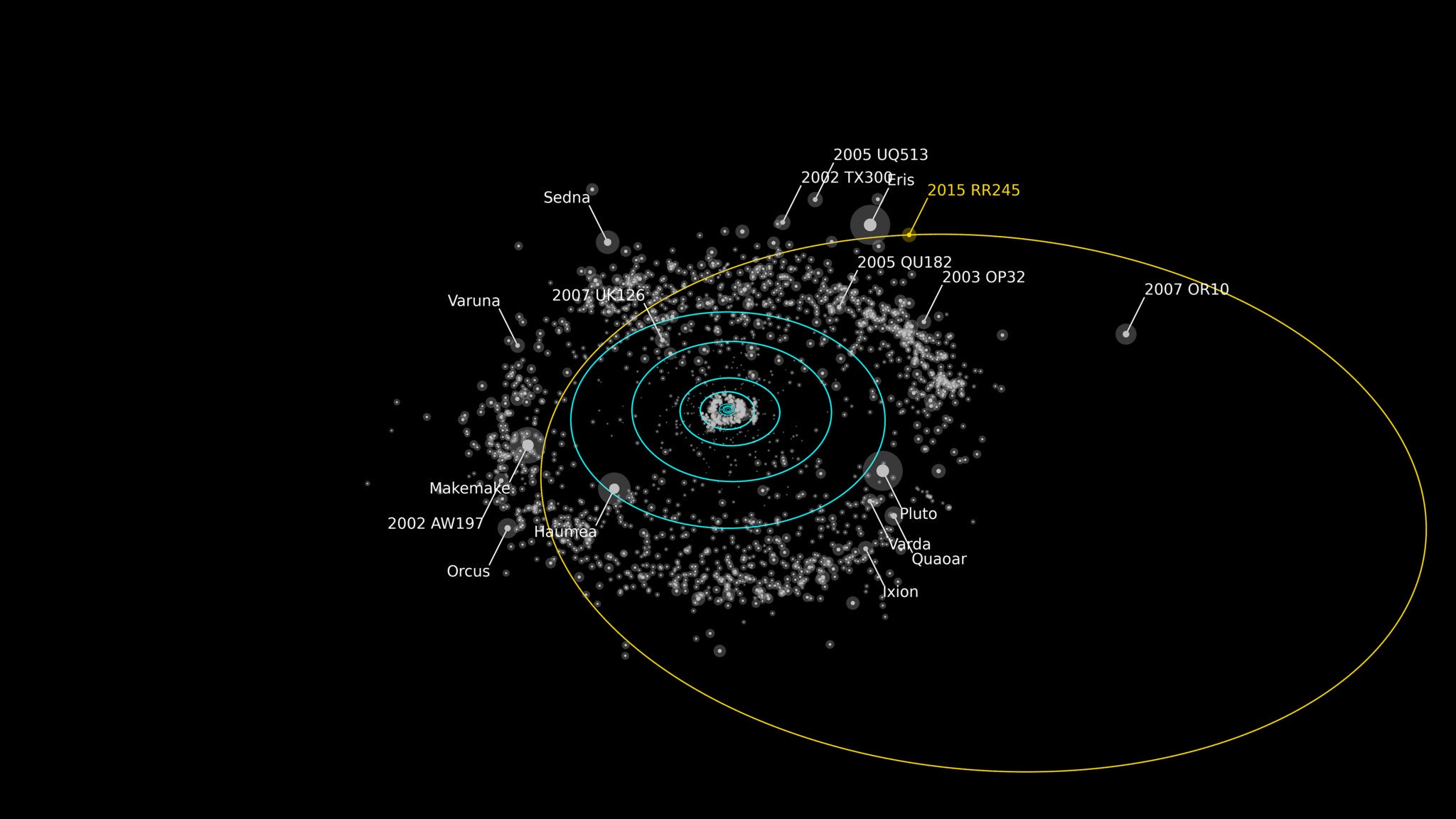Astronomers discover new planet on the edge of the solar system
The mysterious new dwarf planet takes over 700 years to orbit the sun

Your support helps us to tell the story
From reproductive rights to climate change to Big Tech, The Independent is on the ground when the story is developing. Whether it's investigating the financials of Elon Musk's pro-Trump PAC or producing our latest documentary, 'The A Word', which shines a light on the American women fighting for reproductive rights, we know how important it is to parse out the facts from the messaging.
At such a critical moment in US history, we need reporters on the ground. Your donation allows us to keep sending journalists to speak to both sides of the story.
The Independent is trusted by Americans across the entire political spectrum. And unlike many other quality news outlets, we choose not to lock Americans out of our reporting and analysis with paywalls. We believe quality journalism should be available to everyone, paid for by those who can afford it.
Your support makes all the difference.Astronomers have discovered a brand new dwarf planet in the distant reaches of our solar system, with an orbit that takes it far beyond even Neptune.
The ball of rock and ice was first noticed in September 2015 by researcher JJ Kaverlaars when the Canada-France-Hawaii Telescope (CFHT) on Maunakea, Hawaii captured images of a bright slow-moving object as part of the ongoing Outer Solar System Origins Survey (OSSOS).
The International Astronomical Union's Minor Planet Center have now formally designated the dwarf planet 2015 RR245.
According to Michele Bannister, an astronomer doing postdoctoral research at the University of Victoria in Canada, “The icy worlds beyond Neptune trace how the giant planets formed and then moved out from the sun. They let us piece together the history of our solar system. Almost all of these icy worlds are painfully small and faint, so it’s really exciting to find one that's large and bright enough to study in detail.”
The team behind the discovery say that the dwarf planet moves so slowly that they were able to surmise it must be twice as far as Neptune from the sun and were excited to find its orbit takes it around 120 times further from the sun than Earth’s orbit.
So far we don’t know much about 2015 RR245 and though there’s a rough estimation that it’s around 700 kilometres in diameter, Bannister states “The size of RR245 is not yet exactly known, as its surface properties need further measurement. It’s either small and shiny, or large and dull.”
Having only witnessed a small part of its orbit the researchers say the coming years will be spent observing the dwarf planet in order to more clearly define its precise orbit and trajectory. After more solid information has been collected an IAU committee will then be able to rename it, hopefully choosing something more catchy than RR425.
There are currently five dwarf planets recognised by the IAU, including the demoted Pluto.
Those such as RR425 which exist on the edges of the solar system but are still large enough to study in detail are fascinating, according to Bannister, “because they can potentially tell us about what makes an object go from being an unchanging lumpy mashed-together structure of ice and rock to having geological processes that separate and rearrange its material” giving us more of an insight into the formation of our solar system.
Join our commenting forum
Join thought-provoking conversations, follow other Independent readers and see their replies
Comments